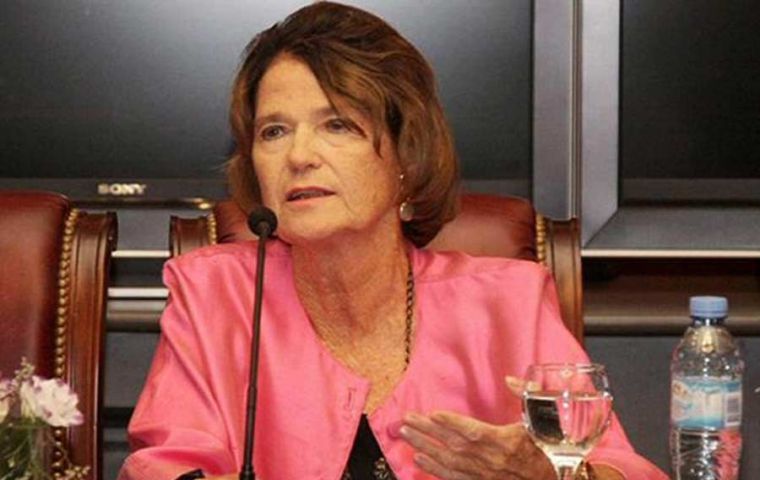MercoPress. South Atlantic News Agency
Argentina: Supreme Court's only female Justice resigns
 Highton was in charge of the Court's offices of domestic violence and of women.
Highton was in charge of the Court's offices of domestic violence and of women. Supreme Court Justice Elena Highton de Nolasco Tuesday turned in her resignation before President Alberto Fernández, effective Nov. 1.
Nolasco's decision came as a surprise within political circles, but not quite so among those closer to her, who were well aware that she regretted the appointment of Horacio Rossatti as the new Chief Justice on Sept. 23.
At that time, Highton de Nolasco had mooted to postpone the vote because former Chief Justice Ricardo Lorenzetti was not present. With the votes of Rosatti, Juan Carlos Maqueda and outgoing Chief Justice Carlos Rosenkrantz a decision was made: Rosatti would be Chief Justice and Rosenkrants would become Deputy Chief Justice.
Highton has long been said to be packing up, but time and again she had stayed onboard due to family issues. She had been appointed to the Court in 2004 under President Néstor Kirchner and has always been on good terms with President Alberto Fernández.
In 2017 in times of Mauricio Macri, she managed to circumvene a Constitutional requirement whereby judges need to be ratified by the Senate once they turn 75.
The Government now has the chance to fill that vacancy with someone they can actually rely on. But the ruling administration will need to reach some sort of agreement to get the two thirds of the Congressional votes required for that appointment. The ruling Frente de Todos (FdT) has been unable to garner enough support to appoint Daniel Rafecas as the new Attorney General and is likely to face a similar scenario regarding to Supreme Court vacancy.
Highton was the first woman appointed to the Court, on June 28, 2004. Carmen Argibay had been nominated before, but her Senatorial approval came in at a later date.
In her resignation letter, Highton does not explain the reasons for her decision, but she does specify it is to become effective Nov. 1 and although it was submitted Tuesday, the document is dated Sept. 30, it was reported.
During the COVID-19 lockdown, Highton worked from home and has spent months without attending the Courthouse. Meetings were held throughout virtual platforms.
Highton was in charge of the Court's Office of Domestic Violence (OVD), which she helped create in 2006. Since Argibay's death, she was also in charge of the Supreme Court's Women's Office.
It is quite likely that the next Supreme Court judge will be a woman.
In the meantime, the Court will function with four members. Before the appointment of Rosenkrantz and Rosatti, it was formed with only three magistrates. Whenever a 3-vote majority is not reached, there are mechanisms whereby additional temporary alternate judges are summoned on every particular deadlocked case.




Top Comments
Disclaimer & comment rulesCommenting for this story is now closed.
If you have a Facebook account, become a fan and comment on our Facebook Page!